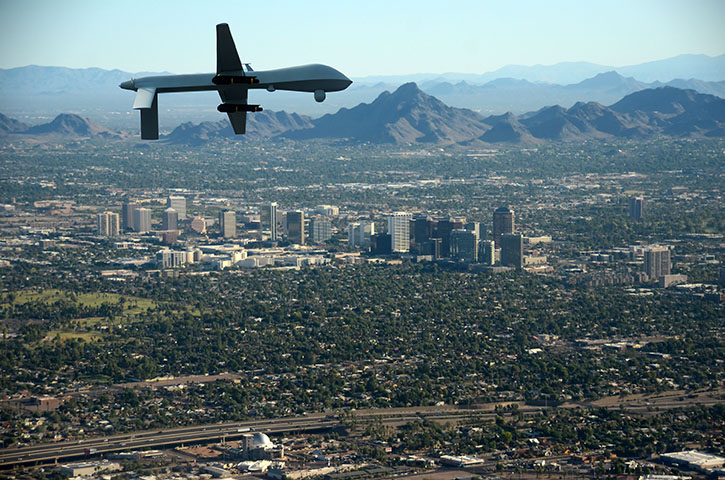
The headlines are full of articles about technology advancements that can help save lives in law enforcement – from improved body armor materials to thermal imagers that can zero in on hidden suspects and evidence.
And pretty soon, that list will include unmanned aircraft systems (UASs) – more widely known as drones. Creating a safe environment for law enforcement in the field is top of mind for municipalities across the country, as police fatalities are on the rise.
Helping officers stay out of harm’s way with UASs can not only save uniformed lives, the technology can keep civilians safe, too, across a variety of applications.
-
Mobile Command Centers: Working from anywhere in any situation is key for law enforcement personnel. UASs can be configured to serve as mobile command centers to help boost signals in low-bandwidth areas and help facilitate communications for vast amounts of data. This enables law enforcement to better monitor remote areas where a situation might be in progress, as well as enable transfer of vast amounts of data between drones and command, even in areas where there isn’t connectivity.
-
Suspect Pursuit: With automobile crashes being the number one cause of officer fatalities, finding a safer way to pursue suspects is high on law enforcement departments’ lists. UASs enable officers to follow suspects from a safe distance without putting themselves or others in harm’s way. Command can operate drones remotely, while getting close enough to suspects to recover key details like license plate numbers and take pictures of the suspects.
-
Crime Scene Reconstruction: UASs can explore crime scenes to scan and take high-resolution photographs of the area, providing a perspective that was previously only available via costly helicopter or other aircraft at a fraction of the price. That data can be used to create three-dimensional reconstructions for investigators and other forensic purposes. These images collect such high levels of detail that they help bolster investigations and are even admissible in court.
-
Search and Rescue: Other UAS applications include search and rescue in remote areas. The systems can be programmed to fly in systematic grids that can reach areas officers and volunteers can’t, often in considerably less time than foot and terrain searches would take. And when outfitted with thermal equipment, it becomes even easier to find wayward hikers and others in need of help.
While widespread adoption of UASs is slowly gaining momentum due to the Federal Aviation Administration’s (FAA’s) growing list of exceptions to its Section 333 regulation, the benefits within law enforcement alone should be cause enough to push the Administration to move more quickly. From multiple applications to cost savings, UASs can keep both law enforcement and civilians safe across the country.
To learn how operational intelligence (OI) can help accelerate UAS adoption for law enforcement departments across the country, download our free eBook.
DroneBlog


